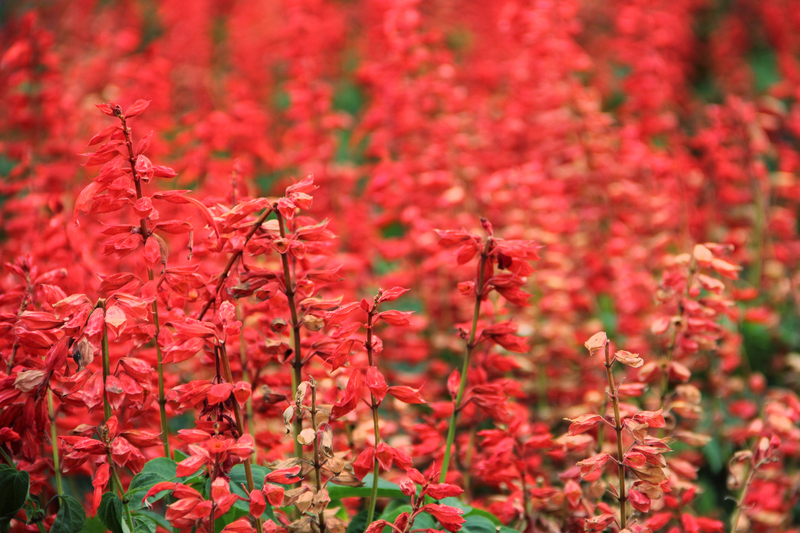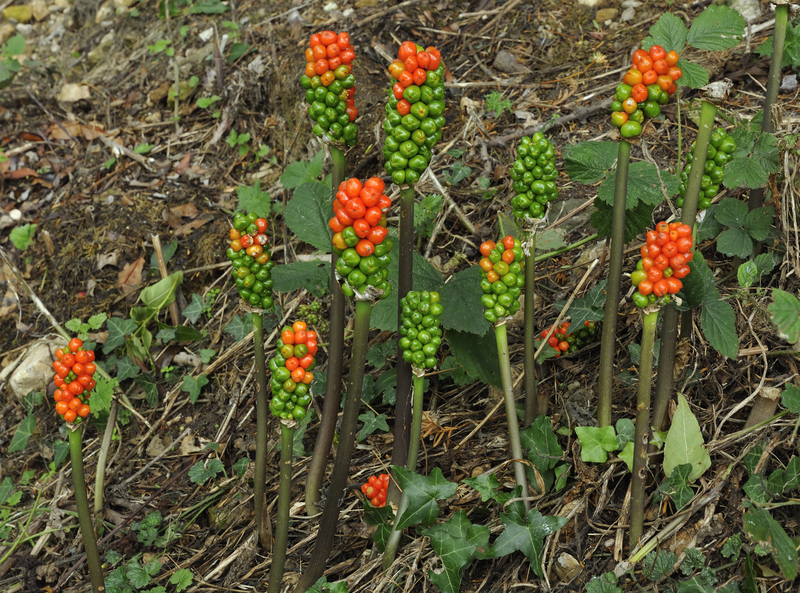Crafting a Garden Perfect for Little Ones
Posted on 01/06/2025
Crafting a Garden Perfect for Little Ones: A Complete Guide
Introduction: Why Create a Child-Friendly Garden?
Designing a garden perfect for little ones is more than just allocating a patch of land for play. It's about cultivating a space that nurtures curiosity, facilitates safe exploration, and sparks a lifelong love for nature. As children engage with their environment, they develop essential skills--motor, cognitive, social, and emotional--while also cultivating an early appreciation for the outdoors. In this comprehensive guide, we'll explore how to craft a garden that is as fun as it is safe and educational for your children.

Benefits of a Kid-Friendly Garden
- Physical Development: Climbing, digging, and running support motor skills.
- Sensory Stimulation: Exposure to diverse plants, textures, scents, and sounds encourages sensory growth.
- Environmental Awareness: Getting hands-on with gardening fosters eco-consciousness.
- Creativity and Imagination: Free, playful spaces help nurture creativity.
- Family Bonding: Gardening can be a joint adventure, strengthening family ties.
Step 1: Planning Your Garden for Little Ones
1. Assessing the Space
Begin by analyzing the available area. Whether you have a roomy backyard or a compact patio, **a garden tailored for kids** can flourish. Sketch out the site, noting sun-drenched spots, shade, and areas that could pose hazards (steep drops, water features, thorny plants).
2. Prioritizing Safety
Safety is paramount. Here are a few essential safety tips:
- Secure Fencing: Enclose the garden to prevent accidental escapes or unwanted visitors.
- Non-Toxic Plants: Choose plants that are free from poisons or sharp thorns. Research every plant before adding it to your kid-friendly space.
- Soft Surfaces: Incorporate grass, mulch, or rubber play mats under play structures to cushion falls.
- Tool Storage: Safeguard sharp tools, fertilizers, and chemicals in locked sheds or containers.
3. Zoning Your Garden
A beautiful garden for little ones features intentional zones:
- Play Areas: Swings, slides, and climbing frames for active play.
- Quiet Corners: Hidden nooks with benches, teepees, or reading spots for tranquility.
- Gardening Beds: Raised beds or pots shaped for small hands, ideal for planting and harvesting.
- Wildlife Zones: Birdhouses, bug hotels, and pollinator patches to invite nature in.
Step 2: Choosing the Right Plants for Children
1. Edible and Tasty Choices
Kids are more adventurous eaters when they've grown it themselves! Consider these safe and edible options for a child-friendly garden:
- Cherry Tomatoes: Small, sweet, and perfect for snacking straight from the vine.
- Sugar Snap Peas: Crunchy, easy to harvest, and fun to eat.
- Strawberries: Few things excite young gardeners more than finding a ripe berry.
- Herbs: Mint, basil, chives, and parsley are all tactile and flavorful.
- Carrots and Radishes: Quick to grow and rewarding to pull from the earth.
2. Sensory and Interactive Plants
To truly make a garden suitable for children, add plants that engage all the senses:
- Lamb's Ear: Incredibly soft leaves are irresistible to touch.
- Lavender: Emits a calming fragrance--an opportunity to talk about pollinators!
- Sunflowers: Planting these giants is a thrilling way for kids to learn about plant growth.
- Nasturtiums: The peppery-tasting flowers are edible and bring a pop of color.
- Snapdragons: Their "mouths" open and close when gently pressed.
3. Avoiding Toxic Plants
Certain common household plants are dangerous to children. Never include toxic varieties such as oleander, foxglove, yew, or lily of the valley in your play garden.
Step 3: Designing Interactive and Fun Features
1. Sensory Paths and Trails
Construct weaving paths of differing textures--pebble mosaics, wood chips, soft grass, or stepping stones. Let kids explore barefoot while building balance and motor skills.
2. Water Play
Water mesmerizes and educates. For a **safe water garden for little ones**:
- Install a shallow splash pad or mini bubbling fountain.
- Use water tables or shallow basins for scooping and pouring.
- Always oversee water play and empty containers after use to prevent accidents.
3. Living Willow Tunnels & Playhouses
Structures made from living willow or woven branches become **magical hideaways**. As willows grow, they provide shady, eco-friendly play dens.
4. Wildlife Attractions
Make your child's garden a wildlife sanctuary:
- Butterfly and bee gardens: Choose nectar-rich flowers and teach kids about vital pollinators.
- Bird feeders and baths: Let children help clean and refill them.
- Bug hotels: Build using natural materials to discover insects up close.
Step 4: Encouraging Learning and Discovery
1. Mini Vegetable Patches
Allocate child-sized raised beds or large planters for your kids. Let them select seeds--watch their pride soar as seedlings sprout, and vegetables ripen.
2. Labelling and Journaling
Involve kids in making **plant markers**, signs, and garden journals. They'll learn to recognize plant names, note weather changes, and document wildlife sightings.
3. Science Experiments
- Grow beans in a clear jar lined with paper towels to observe roots develop.
- Track how sunflowers follow the sun, introducing the concept of heliotropism.
- Study soil layers by digging mini soil profiles.
4. Themed Discovery Trails
Set up themed scavenger hunts--search for colors, textures, bugs, or types of leaves. A discovery trail makes every visit to the garden for kids a new adventure.
Step 5: Providing Safe and Stimulating Play Equipment
1. Natural Play Structures
- Logs and Tree Stumps: Use as stepping stones, "balance beams," or seats.
- Sandpits: Bury treasure or build sandcastles. Cover when not in use to keep animals out.
- Climbing Frames and Swings: Install in safe, level, cushioned areas to minimize risk.
2. Outdoor Art and Creativity
- Easel or Blackboards: Place outside so creativity flourishes in the fresh air.
- Nature Weaving Frames: Attach twine to a frame and encourage weaving with found materials--grasses, feathers, flowers.
3. Role-Play Stations
- Mini Mud Kitchens: Old pots, pans, and a small bench inspire pretend cooking with mud and leaves.
- Mini Markets: Let kids "sell" harvested fruits or flowers to family and friends.
Maintaining a Safe and Engaging Garden Space
- Regularly inspect play equipment for wear and tear.
- Keep pathways clear of debris or tools to prevent trips and falls.
- Remove any toxic weeds or mushrooms whenever spotted.
- Encourage habits: wash hands after gardening, wear hats, and apply sunscreen.
Making Gardening a Family Affair
The best children's gardens are grown together! Involve little ones in every stage:
- Let them help plan the space--drawing ideas, picking plants, and choosing features.
- Set up a gardening calendar for planting, weeding, and harvesting together.
- Celebrate milestones with a picnic, garden party, or a scrapbook of their growing space.
Tips to Keep Little Ones Engaged All Year Round
- Winter: Feed birds, construct insect shelters, or investigate frost patterns and seed heads.
- Spring: Start seeds indoors, watch bulbs burst, begin bug hunts.
- Summer: Pick fruits, run through sprinklers, make sun prints, or host tea parties.
- Autumn: Collect multicolored leaves, plant bulbs for the next year, make scarecrows.

Common Questions About Crafting a Garden for Kids
- What are the best child-safe plants? -- Try sunflowers, snapdragons, calendula, strawberries, peas, and mint.
- How do I keep pests and weeds away without chemicals? -- Use physical barriers, mulch, companion planting, and hand-picking pests.
- Is composting safe? -- Absolutely, as long as the compost bin is enclosed and off-limits to children unless supervised.
Conclusion: Growing a Lasting Love for Nature
Crafting a garden perfect for little ones is a priceless investment in your child's well-being and education. Through a clever mix of edible plants, sensory features, safe play equipment, and opportunities for learning, children can explore, create, and thrive. The joys of planting a seed, watching a butterfly, or constructing a den from willow branches enable kids to build cherished memories and lifelong skills.
Start small, dream big, and witness your little ones blossom alongside their kid-friendly garden. With every step, dig, and giggle, you're nurturing not just a plot of land, but a future filled with wonder, curiosity, and respect for the natural world.
Ready to Begin Your Gardening Adventure?
Implement these ideas for a garden designed for children, and watch the magic of nature unfold in the very heart of your family life!

